Contested Countryside: Commons & the Cold War

This ‘Contested Countryside’ blog by Felicity McWilliams tells a story from the Museum’s newly acquired archives of the Open Spaces Society, Britain’s oldest national conservation body. It explores the disproportionate impact of a small group of West Berkshire Commoners on the US-USSR nuclear arms race in the 1980s.
Greenham Common is an 855-acre gravel plateau in West Berkshire. It is also probably one of the most famous and controversial commons in England.
Now a pleasant and accessible open space, during the 1980s it had truly international significance as RAF Greenham Common, the home of 96 American ground-launched Tomahawk nuclear cruise missiles. Local and international opposition to the NATO airbase and nuclear weapons led to the ‘Women’s Peace Camp’ movement, which maintained a presence of protesters at its perimeter fence from 1980 until the early 2000s.
Women from the Peace Camp even made intrusions onto the base, cutting or climbing the perimeter fence to dance on the roof of nuclear missile silos and once to host a picnic dressed as teddy bears. They risked arrest and imprisonment to bring international attention to their calls for nuclear disarmament. However, they were not the only non-military personnel who wanted to gain access to the common on which the base stood. On 3 September 1988, with the backing of the Open Spaces Society, four local commoners arrived at the main gate and demanded entry to exercise their legal right to walk, graze cattle and dig gravel on the common.
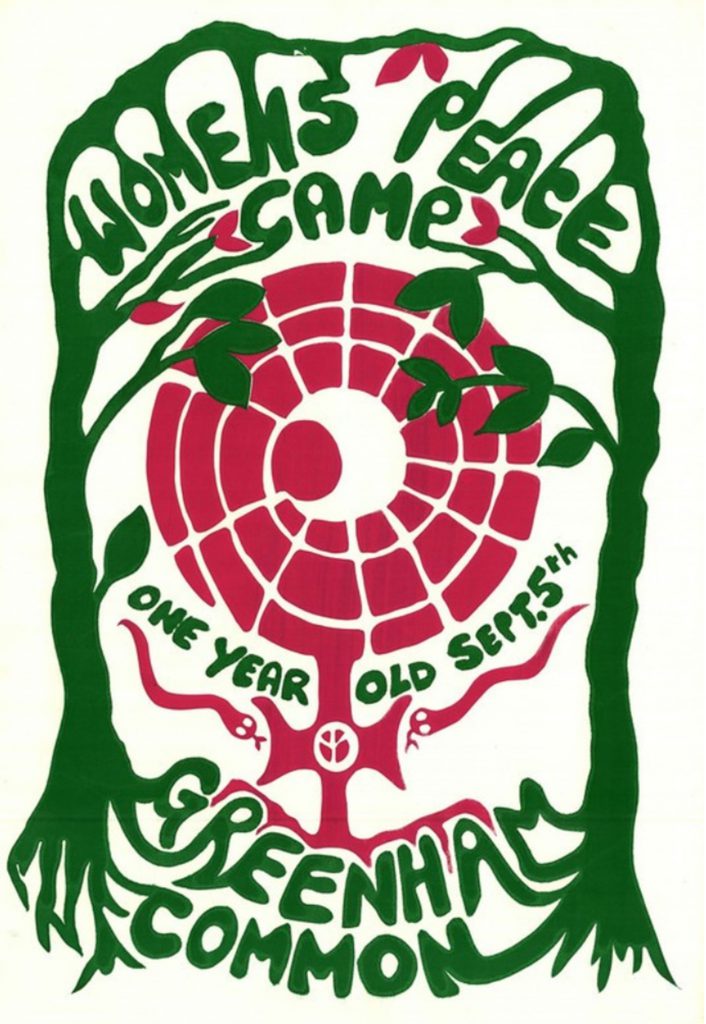
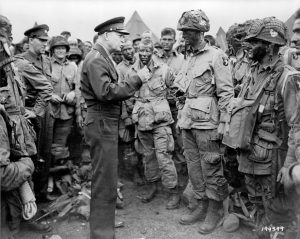
Despite the end of the war and the best efforts of several organisations to get the land returned permanently to the people of Newbury, it remained in military use for most of the rest of the twentieth century. In 1960, the Newbury Corporation officially ‘conveyed’ the land to the Ministry of Defence (MoD) under the condition that underlying commoners’ rights remained unaffected and that the common would revert to the control of the Corporation when it was no longer required for defence. In the context of the Cold War, however, with Britain’s NATO ally, the USA, seeking to maintain a military presence in Europe, that time seemed a long way off.
By the 1970s RAF Greenham Common was re-activated as a US airbase. Many local and international groups protested against the plans, but the Crookham & Greenham Commoners’ Association informed the Open Spaces Society in 1978 of its strategic decision not to oppose the US military use of the Common. It argued: ‘at the present time and in these circumstances we would prefer the continued maintenance of the airfield in operational condition rather than for it to be abandoned or to be changed to some other use which could well be more detrimental to the amenities of our members than the present use.’
The aims of the different individuals and organisations involved were to clash on a number of occasions as each sought to bring local, national and international attention to their own particular priorities. For the commoners, that was securing long-term access to Greenham, even if that meant temporarily abandoning their rights to the military in the short-term. For the protestors at the Women’s Peace Camp the priorities included both the removal of nuclear weapons from Greenham in particular, and ideally the wider nuclear dis-armament of both sides in the Cold War. For Newbury District Council, the ongoing presence of the Peace Camp protestors was––to put it plainly––a bit of a headache. In response to apparent pressure ‘from above’ to deal with the problem, the council revoked all local rights of access to the common in order to be able to issue injunctions against trespass to protestors. This earned it the anger and derision of the Open Spaces Society, who pointed out that the council had already had the power to evict those who camped or lit fires on the common. Instead of using those powers to remove the protestors, the council had unnecessarily revoked all access to the common.
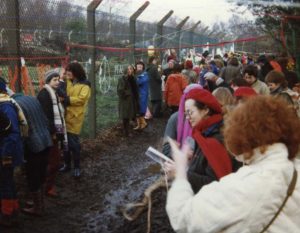
As unlikely as it sounds, the society’s involvement in the case of Greenham Common was further reawakened as a direct result of the terms of the Intermediate-range Nuclear Forces Treaty signed by Ronald Reagan and Mikhail Gorbachev in 1987. Under the treaty, the US military had an obligation to provide accommodation for a team of up to ten Soviet inspectors to visit the airbase up to three times a year. Yet as had been highlighted by a number of legal cases brought by Peace Camp protestors (to the frustration of the commoners themselves who had not wanted to antagonise the MoD), a side-effect of the way the MoD had acquired the land was that many of the structures it had built there were technically unlawful. Any additional structures, such as the new accommodation block planned for the Soviet inspectors, could cause more legal difficulties. The MoD’s chosen solution, despite the considerable forbearance shown to it by the Commoners’ Association up to that point, was to exercise its legal right compulsorily to purchase the commoners’ rights and be done with the whole messy situation.
For the Open Spaces Society, Greenham was an important test case. It wanted to ensure that no dangerous precedents were set for the numerous other commons in which the MoD maintained an ongoing interest. While the chairman of the Commoners’ Committee wanted to seek a compromise with the MoD, the Open Spaces Society lent its considerable experience and support to others who wanted to take a more adversarial approach. Although this strategy brought it into conflict with other groups, it was consistent with the society’s general attitude towards the protection of commons and rights of way which had developed since its earliest years, to take direct action to exert existing legal rights wherever possible. The society felt that every compromise would chip away at rights of access to common land, piece by piece. In the case of Greenham, it put pressure on the MoD by educating commoners about their rights, encouraging them to make regular excursions onto the base, and advising them on how to take legal action against the unlawful military structures.
Most of the unlawful structures the Open Spaces Society dealt with were house extensions and garages, rather than the missile silos holding the West’s Cold War nuclear deterrent. The wider geopolitical issues, however, were not going to deter the society from sticking to its long-held principle of fighting every encroachment on the rights of access to common land. Writing to the Editor of The Guardian in 1983, Duncan Mackay (then deputy secretary of the society) warned:
‘This society has been attempting, since its foundation in 1865, to obtain a legal right of public access to all common land in order that the public should have some say in its future use. The example of Greenham Common shows just how fragile that public right can be…’
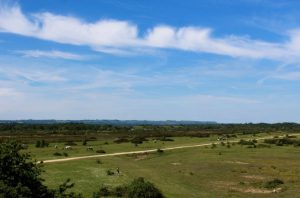
In the 1980s and 90s the Open Spaces Society was also involved with the ‘Commons Again’ campaign which worked with Newbury District Council (now West Berkshire Council) in fighting and pressuring the MoD regarding the extinguishment of commoners’ rights. The campaigners facilitated discussions for all interested parties, and the society and other campaigners ultimately espoused the view that the land should be protected from civil development.
Members of the Open Spaces Society were also in contact with MPs. The MoD intended to buy out and extinguish commoners’ rights which could then enable the de-registration of the common. ‘Commons Again’ also staged events such as temporary public occupation of a small area of the commons to demonstrate that the rights of the commoners were still extant.
The Open Spaces Society continued throughout the 1990s and early 2000s to fight for Crookham and Greenham Commons, especially against encroachment, and it objected to developments such as car parks.
In 1999 the society played an important part in the development of the Crookham and Greenham Commons Bill and with the British Horse Society, and others, it submitted a petition to parliament and gave evidence to the bill committee. This bill became an act in 2002. After more than half a century, it re-established and reasserted commoners’ rights, and a right for the public to walk over the whole area, and for riders and cyclists to follow defined tracks over Greenham and Crookham Commons.
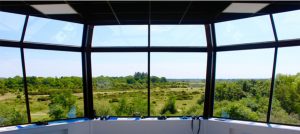
In the 1990s the land was purchased by the Greenham Common Trust. Now, from the new visitor centre and café in the old air control tower, visitors can see across the vast former runway to the old missile silos, among which anybody can now walk, and commoners’ cattle once again graze.
Find out more about the history of the Open Spaces Society on our latest online exhibition or our blog about the acquisition of the Society’s archives.
The Open Spaces Society is generously funding the 2020-2021 MERL Fellowship. Learn about what it will involve and how you can apply on our Fellowships page.
One thought on “Contested Countryside: Commons & the Cold War”
Leave a Reply
You must be logged in to post a comment.

Wow! Thank you for this. Great read.